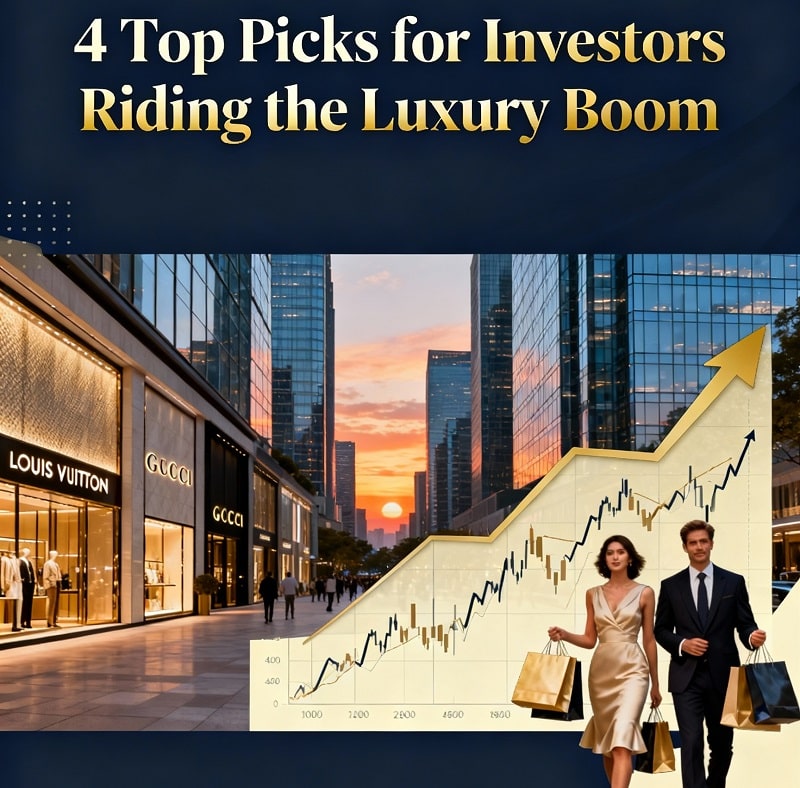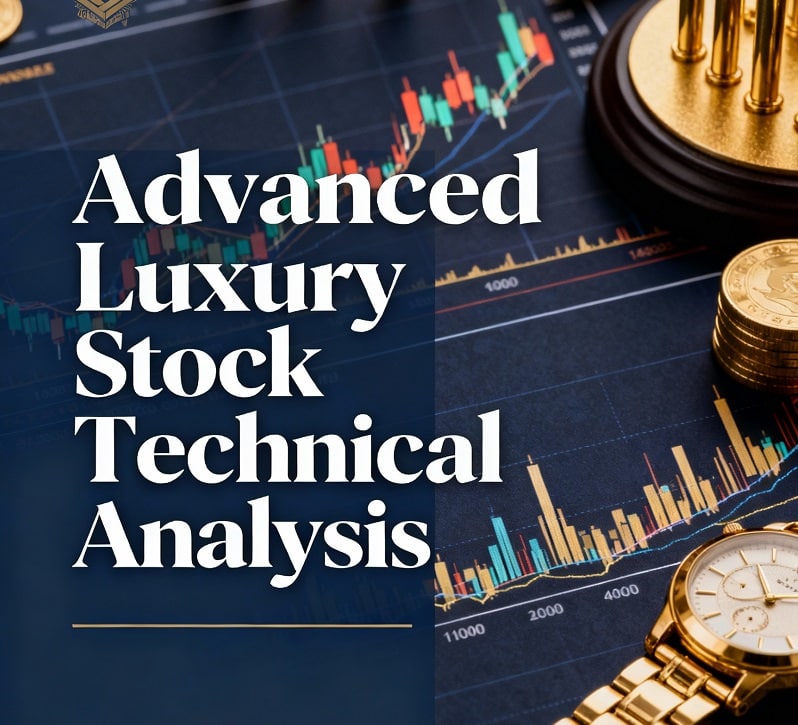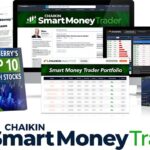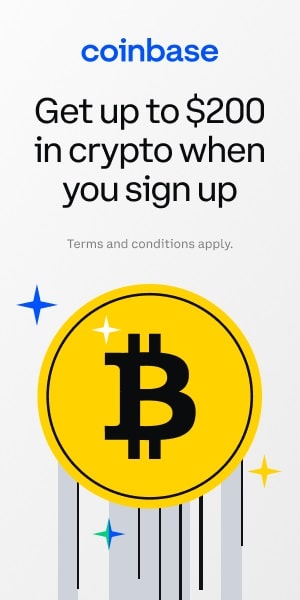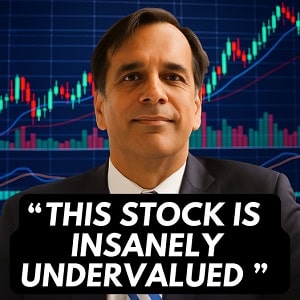In an era marked by economic bifurcation and shifting cultural priorities, the world of luxury spending stands apart, powering record sales, boosting high-end brands, and delivering rich rewards to investors who understand the forces at play. Even as everyday consumers feel the squeeze, the luxury sector surges—driven by affluent buyers whose resilience is rewriting the rules of retail.
Understanding the K-Shaped Economy: Affluent Consumers Driving Luxury
The traditional economic recovery model—where business cycles lift nearly everyone—is changing. Instead of a “V-shaped” snapback where all groups rebound together, economists have identified a “K-shaped” pattern. Here, society splits between winners and losers. On one upward-sloping leg of the K, affluent households—those with investments, substantial real estate, or business assets—continue accumulating wealth and spending freely. Meanwhile, the other leg points down, representing lower- and middle-income groups who face stagnant wages, mounting costs, and diminishing purchasing power.
This divergence isn’t only theory; it’s visible in earnings reports, daily spending, and market behaviors. Major U.S. stock indices have posted three consecutive years of double-digit gains. Real estate remains near all-time highs. Asset owners—who make up the core of luxury brand clientele—are largely insulated from price hikes and rate increases that hit less advantaged Americans.
On the other end of the K, the story is much different. Non-owners of stocks or homes—those relying purely on wage income—are squeezed by rising healthcare premiums, energy bills, food prices, and the cost of housing itself. Restaurants and retail icons like McDonald’s and Chipotle have flagged this pattern in their quarterly earnings, noting that their customer base is becoming more volatile, price-sensitive, and unpredictable. Volatility in these stocks mirrors changes in spending patterns as consumers trade down or cut back altogether.
And yet, luxury brands, which might have appeared vulnerable to economic uncertainty, are thriving. Here’s why:
-
Asset Effect: As portfolios swell, affluent shoppers become even less sensitive to higher prices; their spending rises with their increasing net worth.
-
Global Wealth Drivers: U.S., European, and Asian billionaires have benefitted from booming stock markets, real estate, and corporate profits—creating a robust international clientele.
-
Luxury as Investment: Top-end handbags, watches, and jewelry have become alternative investments, often appreciating over time and signaling status as well as taste.
-
Aspirational Value: Even middle-income consumers, instead of frequent low-cost purchases, are now “trading up” for a lasting statement piece that offers both quality and cachet.
Brands such as Hermes, LVMH, Tapestry, and Ralph Lauren operate at the sweet spot of this shift. Their customer bases overlap significantly with the upward-sloping leg of the economic K. They’ve built reputations not just for style or exclusivity, but for holding value—even as trends, inflation, or global economic ripples wax and wane.
As we dissect this new landscape, it’s crucial for smart investors to recognize that luxury’s “recession resistance” in 2025–2026 isn’t only marketing—it’s fueled by macroeconomic reality. The most iconic names in high fashion and premium goods have proven, quarter after quarter, that they know how to flourish when the consumer world is divided.
In the following sections, we’ll explore four standout luxury stocks benefiting from this dynamic—each with a distinctive edge, technical strength, and a loyal upscale audience. These companies aren’t just surviving the split economy; they’re harnessing it for growth and positioning shareholders for scalable, long-term gains.
4 Stocks Poised to Benefit from Surging Luxury Spending
Hermes International (OTCPK: HESAY): The Unrivaled Power of Scarcity
When it comes to global luxury, no name carries more mystique or prestige than Hermes International. For nearly two centuries, Hermes has stood at the pinnacle of craftsmanship, exclusivity, and brand desirability—transforming simple materials and timeless design into the world’s most coveted status symbols.
Brand Story and Global Reach
Founded in 1837, Hermes began as a harness workshop supplying European nobility with equestrian goods. Over generations, the company evolved into a fashion house synonymous with heritage, patience, and ultra-high-end artistry. Today, Hermes boasts retail outposts in more than 50 countries, serving a clientele ranging from celebrities and royalty to discreet titans of industry.
But what truly separates Hermes from its peers isn’t just the breadth of its global footprint—it’s the obsessive control over quality and access. Everything from its buttery leather Birkins and Kellys, to iconic silk scarves and enamel bracelets, is produced in limited quantities, often requiring years on waiting lists. Hermes’ “artificial scarcity” approach turns shopping into a ritual and ownership into a privilege.
How Hermes Creates Demand Through Exclusivity
To appreciate Hermes’ strategy, consider the path to acquiring its most famous product: the Birkin handbag. You can’t just walk into a boutique and pay for one—even the most affluent shoppers are carefully vetted by sales associates, sometimes building relationships over years before being offered the chance to purchase.
While this exclusivity might sound frustrating for consumers, it has done wonders for brand loyalty and secondary market prices. In fact, certain Hermes bags outperform traditional investments like gold or real estate —fetching jaw-dropping sums at auction and even appearing in portfolios as alternative assets.
The company fiercely guards its practices, occasionally wading into legal disputes to protect its brand, reputation, and customer mystique. This control, coupled with consistently impeccable quality, ensures that Hermes remains uniquely positioned atop the luxury food chain.
Technical and Fundamental Highlights
2025 was, at first glance, a challenging year for HESAY shares. The stock lagged both U.S. and European indices, as investor interest rotated toward tech and other cyclical plays. Yet savvy analysts spotted accumulation around the $235 level—where the stock has staged three previous bounces, each time launching into a rally that delivered new all-time highs.
Key Technical Signals:
-
Strong Support: The $235 level has repeatedly acted as a durable “floor.”
-
200-Day Moving Average: If HESAY can close decisively above this key trend line, historical patterns show that momentum shifts dramatically toward the bulls.
-
Upside Triggers: Any positive catalyst—be it stronger-than-expected China sales or a renewed buyback—could ignite the next phase higher.
Fundamentals:
-
Hermes’ balance sheet remains fortress-like, with minimal debt and high margins, even in inflationary environments.
-
Sales growth in core markets (Asia, North America) stays brisk, benefiting from rising wealth and currency advantages.
-
Expansion in lifestyle categories—home, jewelry, and ready-to-wear—offers additional avenues for growth if flagship demand ever softens.
Risks & Future Growth
For all of its brilliance, Hermes isn’t immune to risks:
-
Economic Slowdowns: While ultra-high-net-worth buyers are resilient, global downturns could temporarily mute secondary demand.
-
Geopolitical and Supply-Chain Issues: Luxury relies on open trade lines and the security of international clientele; disruption poses ongoing challenges.
-
Counterfeiting: The allure of Hermes naturally breeds a thriving counterfeit market. Stringent control and successful legal action are necessary defensive tools.
Yet, Hermes’ moat is as wide as any in global luxury. Its blend of craft, aspiration, and scarcity ensures that, even when trends shift or economies stumble, demand for the world’s rarest status symbols rarely dries up. For investors seeking exposure to the strongest of the strong in the luxury sector, HESAY stands as the platinum standard.
Tapestry Inc. (NYSE: TPR): The American Luxury Giant
While French and Italian fashion houses command global headlines, American luxury is equally robust and fast-evolving. Tapestry Inc., with brands like Coach, Kate Spade, and Stuart Weitzman, sits at the epicenter of America’s high-end consumer culture—serving millions with style, durability, and status.
Multi-brand Strategy and Consumer Trends
Tapestry is unique among major luxury players. Rather than relying on a single house, it orchestrates three distinct, yet complementary, brands. Coach—its flagship—captures classic American heritage with enduring popularity in both handbags and accessories. Kate Spade channels a younger, playful buyer, appealing to both aspirational customers and the affluent millennial demographic. Stuart Weitzman, meanwhile, targets the top of the shoe market, marrying elegance to comfort.
This cross-brand synergy allows Tapestry not only to innovate and react to shifting consumer tastes, but also to hedge exposure. When one brand is challenged (like Kate Spade recently), others often pick up the slack, stabilizing company-wide results.
Luxury’s resilience in the U.S. owes much to asset-rich consumers—those more likely to seek value, longevity, and brand prestige in their purchases. In 2025, Coach’s continued growth demonstrated just how powerful the American luxury trend remains when economic divergence intensifies.
Q1 2026 Earnings Deep Dive
Tapestry wowed the street with its fiscal Q1 2026 performance:
-
Sales Growth: Over $7 billion in annual revenue, led by 21% YOY Coach division growth.
-
Earnings Beat: Both the top and bottom lines exceeded consensus, confirming strategic execution and strong consumer demand.
-
Tariffs: Despite significant headwinds from tariffs—now a major focus in fashion’s international landscape—Tapestry preserved profit margins and boosted net income.
-
Kate Spade Decline: Not every division soared; Kate Spade’s softness demonstrates how consumer bifurcation sometimes hits specific lines more than others.
Management’s ability to tell a credible story of durable growth, margin stability, and geographic expansion impressed analysts and increased investor confidence.
Technical Chart Insights and Uptrend Analysis
Tapestry’s stock price has ridden the luxury roller-coaster of 2025, but key technical markers point to a resilient trend:
-
200-Day Moving Average: In the summer dip, TPR shares found sturdy support at the 200-day SMA. On each rebound, momentum returned.
-
50-Day SMA Break: The recent earnings-driven rally powered TPR above its 50-day average, often a bullish signal in stocks coming out from consolidation.
-
Momentum Indicators: MACD and RSI show constructive, growing momentum without much overheating—there’s potential for further upside if Coach’s results persist and tariffs abate.
Strategic Challenges and Analyst Outlook
It isn’t all clear sailing:
-
International Competition: U.S. luxury must continuously battle for global mindshare against entrenched European rivals.
-
Tariffs and Trade Policy: Unpredictable tariff regimes force Tapestry to manage costs, sourcing, and pricing with extreme flexibility.
-
Brand Rotation: Securing growth at Kate Spade remains both a short-term challenge and a longer-term opportunity for margin improvement.
Analyst sentiment reflects optimism:
-
Barclays, JPMorgan: Both recently raised price targets and maintain “Buy” ratings, citing Coach’s growth, effective cost control, and stable market positioning.
-
Strategic Expansion: Tapestry is investing in direct-to-consumer channels, enhanced digital experiences, and global flagship launches—betting big on the intersection of status and accessibility.
Why Tapestry Is a Top Pick During the Luxury Boom
Tapestry exemplifies modern American luxury investment. Its portfolio diversification, focus on profitable growth, and demonstrated recovery power in turbulent markets align perfectly with the K-shaped consumer divide.
For investors seeking exposure to luxury demand, proven management, and a multi-brand hedge, TPR offers a compelling combination of resilience, expansion potential, and favorable technical signals as high-end spending surges into 2026.
LVMH Moet Hennessy Louis Vuitton (OTCPK: LVMUY): The King of Conglomerate Luxury
No brand embodies global luxury like LVMH. Born from the merger of iconic French labels, LVMH Moet Hennessy Louis Vuitton is the undisputed titan atop the world’s fashion, accessories, and fine wine pyramid. With divisions spanning high fashion, jewelry, cosmetics, and spirits, LVMH doesn’t just set trends—it defines what luxury means for millions of affluent consumers.
Portfolio of Iconic Brands
Few companies boast a portfolio as deep, diversified, and aspirational as LVMH:
-
Louis Vuitton: The world’s most recognizable luxury label, celebrated for handcrafted trunks, bags, and ready-to-wear.
-
Christian Dior, Fendi, Celine: Each a powerhouse in couture, accessories, or avant-garde style.
-
Bulgari, Tag Heuer, Hublot: Icons in jewelry and watchmaking, with a loyal following among collectors and connoisseurs.
-
Moet & Chandon, Hennessy, Veuve Clicquot: Legendary wines and spirits bring the LVMH touch from haute couture to the world’s most exclusive dinner tables.
Strategically, this breathless array means LVMH can surf every wave in high-end consumer sentiment—whether beauty, fashion, champagne or jewelry is booming, LVMH wins.
China’s Influence and Earnings Momentum
The global recovery after the pandemic has been led, in large part, by resurgent demand from Chinese and Asian buyers. In late 2025, LVMH highlighted unexpectedly strong results from China—even as early-year concerns loomed over property and local luxury consumption.
-
October 2025 Call: Management flagged robust leather goods sales in China and less-than-expected losses elsewhere, a powerful combination for margin resilience.
-
Asian Expansion: LVMH is expanding its footprint aggressively in major Chinese cities, rolling out new flagship stores, and investing in market-specific branding.
-
High-End Momentum: Celebrity endorsements, bespoke products, and digital luxury have exploded in popularity, driving purchase intent in younger, wealthier Chinese cohorts.
LVMUY’s stock delivered a thunderous response, rising nearly 9% on the post-earnings trading day and launching a 35% rally over just three months.
Technical Breakout: Golden Cross and RSI Readings
LVMUY’s chart validates its market dominance:
-
Golden Cross Formation: The technical picture turned decisively bullish as the 50-day SMA crossed above the 200-day SMA, signaling a new uptrend for momentum traders.
-
Relative Strength Index (RSI): After the long climb, RSI is trending in “frothy” territory but not yet overbought, suggesting room for further gains before momentum fades.
-
Price Action: 14 up days in the last 21 trading sessions highlight sustained buying from institutional investors.
Risks and Expansion Opportunities
LVMH’s biggest risks are those impacting all global consumer giants:
-
Economic Fluctuations: Currency shocks, inflation, or political uncertainty in Europe/the U.S. may pressure margins.
-
Competition: The conglomerate faces rivals in every segment, from Gucci and Richemont to independent Asian luxury disruptors.
-
Regulation and Tariffs: Trade wars and changing import duties can impact cross-border flows, especially as luxury consumption globalizes.
But the opportunities far outweigh the dangers:
-
Digital Transformation: LVMH is a leader in e-commerce, luxury online experiences, and tech-enabled loyalty.
-
Emerging Market Playbook: To capture new affluent buyers, LVMH invests heavily in local marketing, influencer partnerships, and experiential retail.
-
Portfolio Synergy: Cross-brand collaborations—such as limited-edition bags or jewelry—create viral moments supporting further demand and price power.
For investors looking to tap into the world’s most powerful luxury engine, LVMUY offers proven market leadership, magnified consumer tailwinds, and technical resilience as wealth and aspiration converge in the post-pandemic boom.
Ralph Lauren Corp. (NYSE: RL): The Steady Eddie Outperformer
While some luxury brands define themselves with exclusivity and headline-grabbing prices, Ralph Lauren stands out for its enduring appeal, consistent execution, and broad, aspirational reach. For over half a century, Ralph Lauren has balanced classic American fashion with modern twists—serving everyone from Wall Street executives to young professionals seeking a taste of elegance.
Management Excellence and Earnings Momentum
Ralph Lauren’s strategy is built on sturdy foundations:
-
Smart Brand Evolution: The company adeptly navigates shifting trends, refreshing core lines while introducing new collections across apparel, accessories, and fragrances. Its Polo line remains globally beloved, while premium launches keep high-end buyers engaged.
-
Global Reach: RL has expanded aggressively into Europe and Asia, building flagship stores and leveraging local influence to amplify brand prestige.
-
Digital Transformation: RL’s investment in digital retail and marketing has paid off, expanding margins, driving direct-to-consumer sales, and winning younger consumers.
2025 was a banner year for RL:
-
Q2 2026 Results: RL delivered its second-ever $2 billion quarter and $3.79 EPS—nearly 10% above consensus, a testament to both operational discipline and resilient demand.
-
Revenue Growth: Sales rose 16% year-over-year, prompting the company to raise fiscal year guidance.
-
Analyst Upgrades: Major analysts—UBS, Barclays, Evercore ISI—all boosted their price targets, with UBS setting a ‘Street-high’ at $435. With RL shares around $330, that’s over 30% implied upside.
Technical Analysis and Support Levels
RL shares have been on a tear, climbing from below $200 to north of $330 in mere months—a run fueled both by fundamentals and technical tailwinds.
Key Technical Features:
-
50-Day & 200-Day SMA: After breaking these averages in May following the tariff saga, RL’s 50-day SMA became a “launch pad.” The stock has bounced off this marker six times since July 2025, each bounce followed by another rally.
-
Relative Strength Index (RSI): RL’s RSI has stayed below “Overbought,” indicating healthy momentum and capacity for further gains.
-
Price Action: The uptrend has been steady without extreme volatility, reflecting disciplined accumulation by institutional investors.
Analyst Ratings and Growth Drivers
Analysts highlight several positive drivers:
-
Operational Margin Expansion: RL’s efficiency, particularly in supply chain and merchandising, positions it to thrive in inflationary environments.
-
Brand Recognition: As more consumers worldwide seek premium western style, RL’s aspirational branding draws in new buyers without relying solely on ultra-wealthy segments.
-
Tariff Relief: With major tariffs rolled back (“Liberation Day”), RL’s costs declined, allowing for margin recovery and global pricing flexibility.
Why Ralph Lauren Is a Top Holding in the Luxury Boom
Ralph Lauren sits at the intersection of exclusivity and accessibility—offering both aspirational luxury and core staple products. Its consistent earnings power, global expansion, and digital transformation give investors exposure to stable, long-term growth. During periods of economic bifurcation, RL often outperforms, as both affluent and middle-market consumers trade up for its timeless products.
For investors building a high-end portfolio, RL is the reliable workhorse—a company with deep cultural roots, proven leadership, and a long runway as global luxury demand accelerates.
Advanced Luxury Stock Technical Analysis
Understanding how to time entries and exits for luxury stocks can make a big difference, especially when market sentiment shifts or volatility rises. Here are the key technical tools and indicators investors should master:
Moving Averages
-
50-Day Simple Moving Average (SMA): Often employed to track short-term momentum. When a stock’s price closes consistently above the 50-day SMA, it’s usually in a bullish phase. All four featured luxury stocks (Hermes, Tapestry, LVMH, Ralph Lauren) have shown resilience by bouncing off this level in 2025.
-
200-Day SMA: Used to identify long-term trends. Major institutional investors watch for a “Golden Cross” – when the 50-day SMA crosses above the 200-day – as a powerful buy signal. Conversely, dropping below both can signal the start of a longer correction.
RSI and Chart Patterns
-
Relative Strength Index (RSI): Measures momentum. An RSI above 70 can mean a stock is “overbought,” while below 30 indicates “oversold.”
-
Hermes, Tapestry, LVMH, and RL have all managed strong rallies this year without pushing RSI into extreme territory, signaling sustainable momentum.
-
-
Key Patterns: Double bottom, consolidation base, golden cross, and bull flags are constructive for luxury sector entries. Head & shoulders and breakdowns demand caution and often call for rebalancing or partial profit-taking.
Volume and Trend Confirmation
-
Rising volume on up days confirms institutional interest and conviction.
-
Watch for distribution days (high volume on down days), which may precede consolidation or sector rotation.
Tailored Technical Strategies for the Luxury Sector
-
Breakout Buying: Enter on clean breaks above multi-week resistance, especially after earnings beats.
-
Trailing Stops: Use a dynamic trailing stop to lock in gains if strong trends reverse, especially after parabolic moves.
-
Position Sizing: Avoid overweighting a single brand; luxury can be cyclical, and trends can change rapidly.
Portfolio Strategy for Riding the Luxury Boom
Allocating to luxury is not just about picking the right stocks—the way you balance, rotate, and hedge can determine your long-term returns.
Position Sizing and Diversification
-
Allocate exposure across the four featured brands using equal weighting or a custom mix based on conviction and trend strength.
-
Consider regional diversification—U.S. (Tapestry, RL) and Europe (Hermes, LVMH)—to smooth currency and macro risks.
Risk Management
-
Set profit targets and stop-loss levels for each holding, factoring in both technical and fundamental catalysts.
-
Monitor quarterly earnings, tariff developments, and competitive shifts; luxury stocks are sensitive to headline risk.
Timing Your Entries and Exits
-
Use technical levels (SMA, chart resistance/support) to optimize timing.
-
Layer into positions gradually, building on confirmed momentum rather than chasing headline moves.
-
Consider trimming winners during periods of market froth or sector rotation.
Alternative Exposure and Hedging
-
Diversified ETFs and luxury baskets allow for passive exposure with built-in risk mitigation.
-
Option strategies (covered calls, protective puts) can provide additional yield or downside protection.
Key Takeaways
-
Affluent demand is powering luxury sales and stock performances despite broader economic divides.
-
Hermes, Tapestry, LVMH, and Ralph Lauren are uniquely positioned for ongoing upside.
-
Technical analysis helps identify optimal entries, exits, and momentum shifts within the sector.
-
Portfolio strategy—diversification, risk management, and disciplined profit-taking—is essential as volatility persists.
-
Luxury investing is about more than fashion; it’s about harnessing macro trends, cultural cachet, and brand resilience.
Conclusion: Riding the Wave of Luxury Growth
As inflation, interest rates, and consumer sentiment shift across the globe, the luxury segment continues to chart a course of its own, lifting ambitious investors toward new highs. Brands like Hermes, Tapestry, LVMH, and Ralph Lauren have stood the test of time by recognizing that affluent clients aren’t just buyers—they’re community builders, trendsetters, and reliable anchors for growth.
The K-shaped economy isn’t a threat for luxury portfolios. It’s an invitation. By recognizing the forces that separate luxury winners from the rest, and using advanced analysis to guide decisions, today’s investors can unlock enduring performance as spending and aspiration keep climbing.
Start building your luxury portfolio now—capitalize on what makes these brands truly timeless.
Frequently Asked Questions (FAQ)
Why do luxury stocks perform well during economic downturns?
Affluent consumers remain resilient even as everyday spending slows. Luxury goods are considered alternative assets, holding value over time and signaling status as well as taste.
How important is technical analysis for luxury investing?
Very—luxury stocks often follow clear technical patterns. Watching SMA, RSI, and volume can help investors optimize entry and exit points, letting winners run while locking in gains on reversals.
Should I focus on a single brand or diversify across several?
Diversification across multiple luxury players, as highlighted in this article, balances sector risk, global trends, and individual performance fluctuations.
Are these stocks suitable for long-term investing?
Yes, especially for those seeking growth, capital preservation, and stable exposure to affluent consumer trends. Market timing can enhance returns, but holding core positions is rewarded in luxury’s multi-year cycles.
What about dividend income?
Several luxury companies (e.g., Ralph Lauren) pay regular dividends, adding steady income to capital appreciation.


